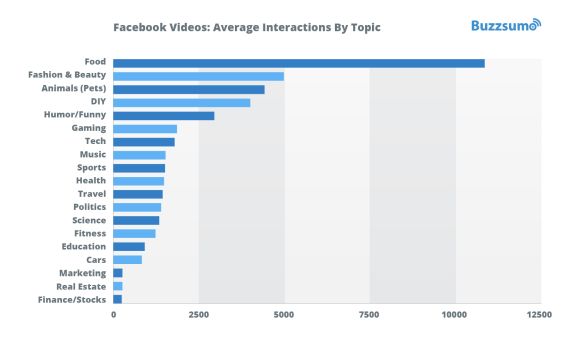For my genre project, I’ve been looking into recipe how-to videos (like Tasty or Tastemade). This type of video is a short, fast-motion demonstration of how to prepare a recipe. They are short—thirty to seventy seconds, usually—and are custom-made for Facebook’s auto-play feature, so that they begin to play as a viewer scrolls. The clear, bright images draw a viewer in.
What I’ve found particularly interesting about this genre is the way they were made for a specific situation (Kairos). As Facebook changed its algorithm to promote videos that viewers interacted with and added auto-play, it was almost by luck that Buzzfeed realized that lifehack videos featuring food were their most popular ones, and began to shoot food videos that would get likes and work well on silent with auto-play. These videos feature overhead, first-person POV shots that give the viewer a sense of connection with the food being made on the screen, further encouraging them to interact with and share them.
I’m finding it difficult to get information about things that aren’t Tasty videos. There is some news on Tastemade, but very little on other channels—I’m worried that the focus is too narrow. I’m still in the process of drafting and working in more of our vocabulary from class—I realize that I’m describing things like multimodality but not using the word itself. On the positive side, I’ve found a lot of information that I find interesting! I have information for all of the sections of the project, especially the Kairos section, which I was initially worried about.
I’ve written about Tasty videos in Publishing 388: Ethics/Art/Politics/Entertainment. In that class, we recently looked at an article by Cynthia Duquette Smith, which examines the use of constitutive rhetoric by Martha Stewart’s company. This rhetoric not only speaks to a particular audience, but uses narrative to shape that audience into the ideal one. I find it fascinating that Tasty (and other videos, but these specifically—I have watched far, far too many of them) uses some of the same techniques. In constitutive rhetoric, the rhetor does not just address a pre-existing audience, but presents an identity-forming discourse—the audience is presented with a narrative world (a rhetorical vision) and encouraged to become the kind of person who can inhabit it. Smith talks about how Martha Stewart portrays her life as organized and ideal, with the home as a therapeutic space; viewers and readers are encouraged to model themselves off of Stewart to become self-disciplined consumers. Tasty videos present a rhetorical vision as well—they present cooking as simple and enjoyable, and frame their videos with scenarios (date night, kids’ lunch, meal prep). Viewers are encouraged to be the kind of people the anonymous hands in the video present—organized, with food and its preparation as a central value in romantic and parental relationships. I think that’s an interesting relation between this genre of video and a larger theory of rhetoric in published content.
I think that the point about audience raised in “Among the Audience” is important to recipe how-to videos. Most food videos invokest a millennial audience—that is “the intended audience as well as those imagined and hailed by the writer”, but reaches many more people because of the way the platform is designed. Because auto play means that more people see the video, more people interact with it, which means that it goes higher up on the Facebook newsfeed. There it can address another audience, possibly a much different one. It’s interesting to consider how videos are or are not aimed to reach that other addressed audience as well.
